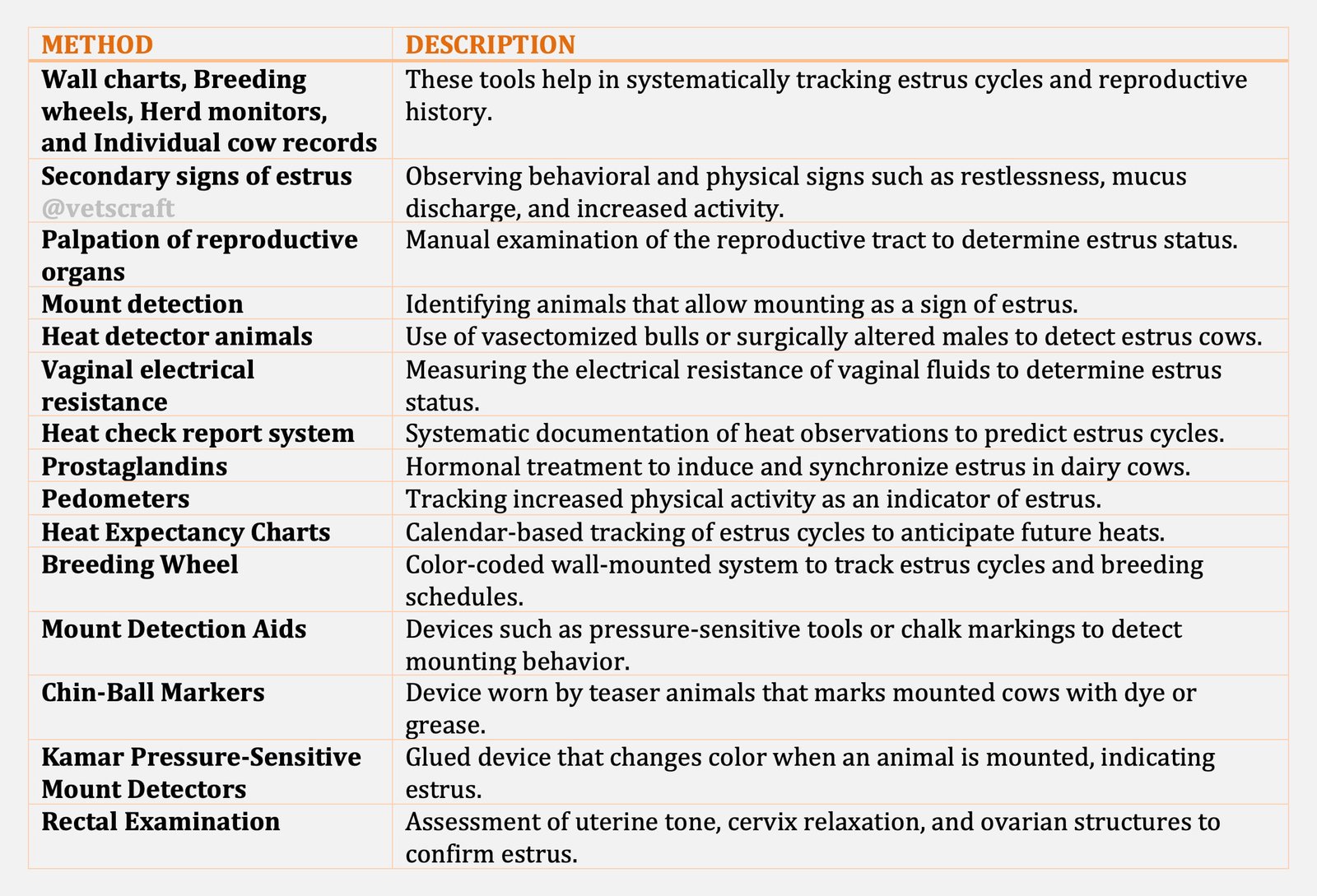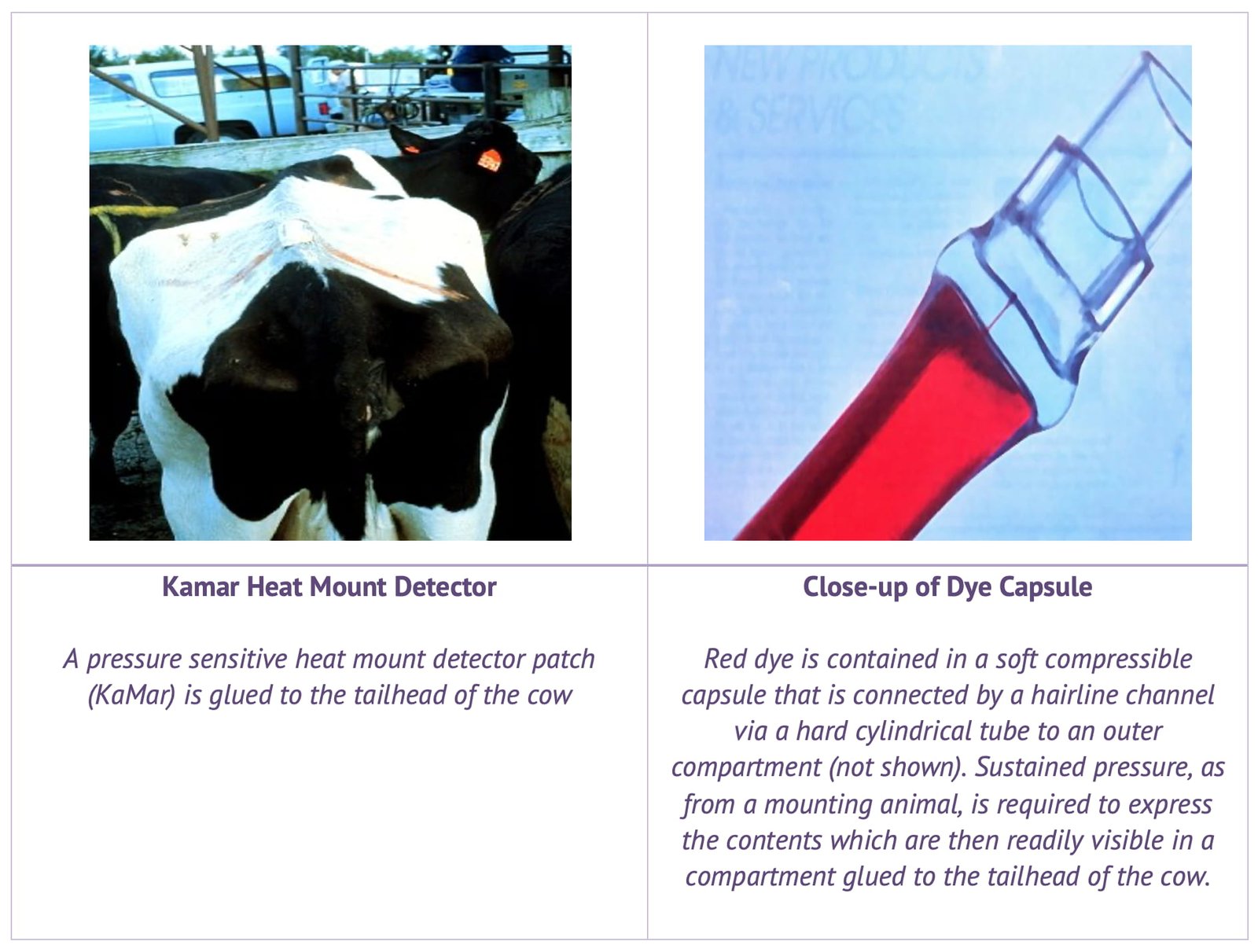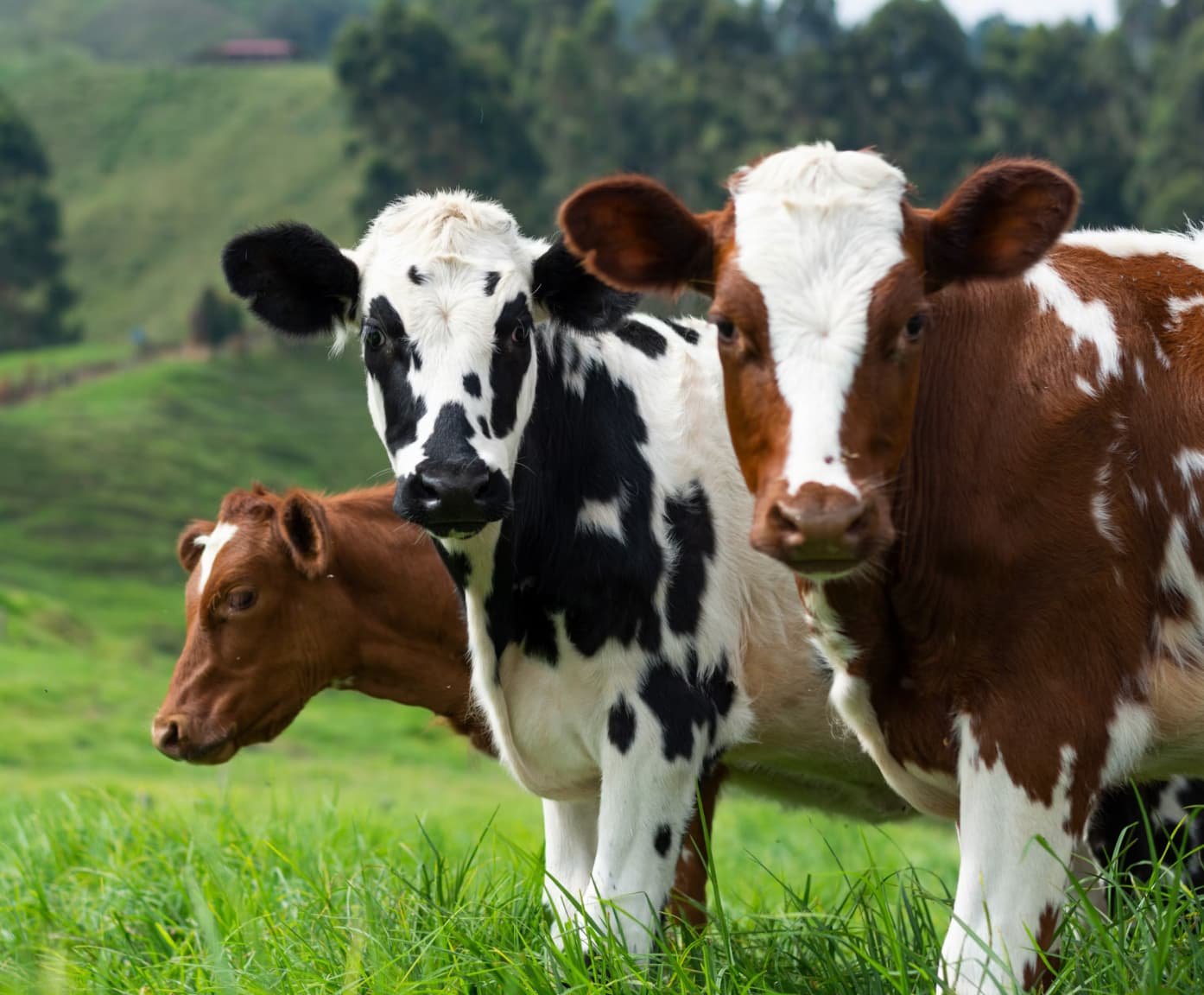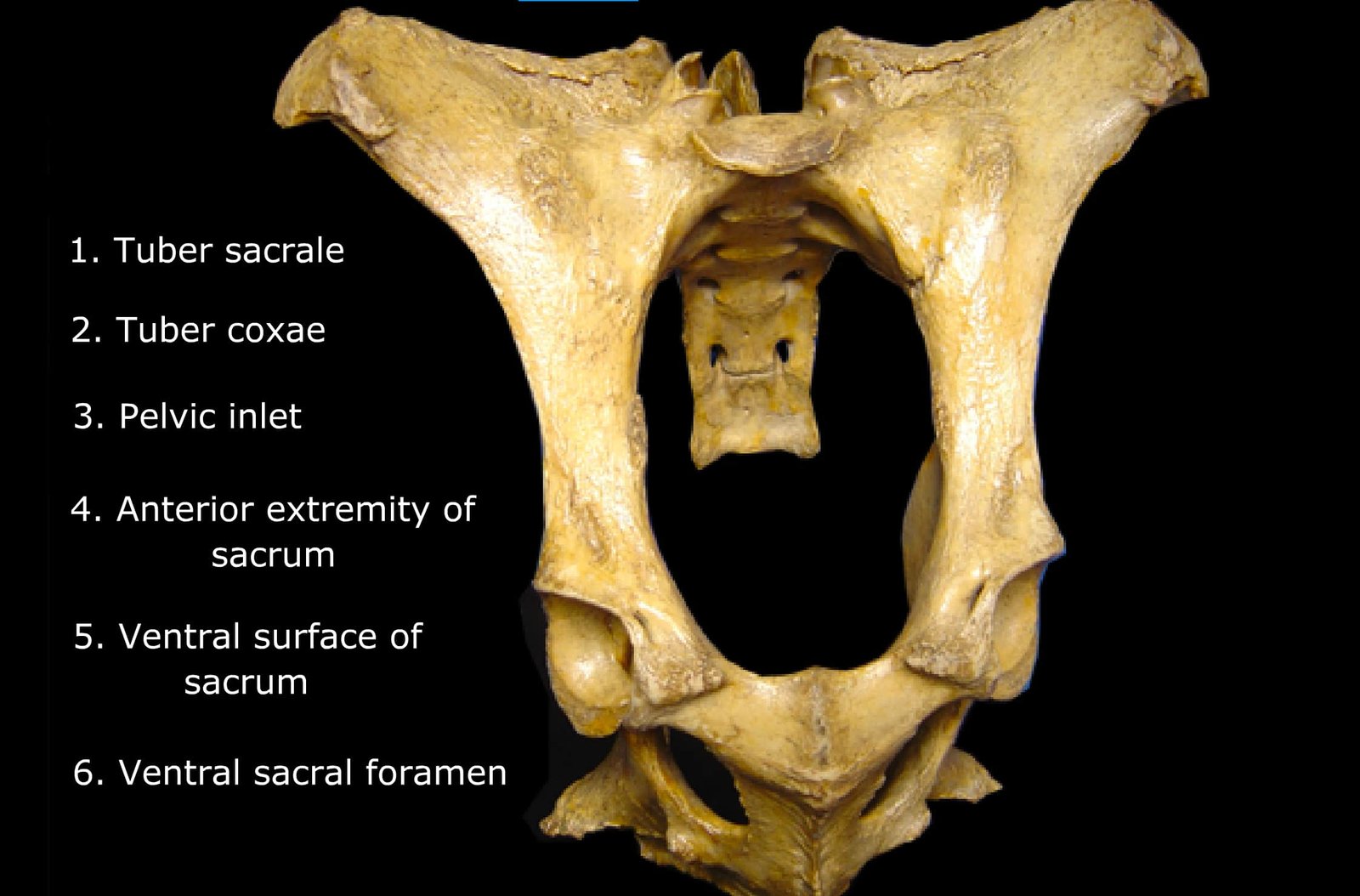TABLE OF CONTENTS
Estrus Detection in Farm Animals
Estrus detection aids in farm animals are needed in most herds in order to overcome the difficulty of estrus detection so that all animals in estrus are effectively identified and bred either naturally or artificially.
The various estrus detection aids are as follows:
- Wall charts, Breeding wheels, Herd monitors and Individual cow records
- Secondary signs of estrus
- Palpation of reproductive organs
- Mount detection
- Heat detector animals (Lateral deviation of penis, Caudal epididymectomy and Dorsal ligament resection)
- Vaginal electrical resistance
- Heat check report system
- Prostaglandins
- Pedometers

Animal Records
These aids require recording off all heats (whether the animal is to be inseminated or not) including those observed in early post partum period and should be used on a daily basis.
Using a pocket notebook to record heats and other information and transferring information to permanent individual cow records allows monitoring of abnormally long cycles and long intervals from calving to first service.
Heat Expectancy Charts
Heat expectancy charts are available in the form of calendar that is organised on a 21 day cycle.
This simple management aid allows heat to be recorded so that the next heat can be predicted and the cows can be watched closely around the time of approaching heat.
Breeding Wheel
These are wall mounted reproductive record systems that use color coded pins or markings to indicate the day of estrus.
By turning a transparent plastic dial or by sliding the plastic cover on a daily basis, the future heats and reproductive events can be anticipated.
Mount Detection Aids
Two methods are widely used for mount detection:
- Pressure sensitive devices.
- Paint stick, chalk or paint on the tail head.
When animals are in estrus, mounting activity changes the color of the detector or erases the chalk or paint stick markings.

Pressure Sensitive Devices
Chin-Ball Markers
Chin-Ball Markers is a device similar to a ball point pen that is strapped on the underneath side of the chin of the teaser animal which could be an androginised cow or deviated “gomer” bulls.
The device causes colored paint, dye, oil or grease to be smeared on the back of the cow that is mounted.
Kamar pressure (Sensitive Mount Detectors)
This device containing a red dye is glued on the tail head between the pin and hooks of the cow. Sustained pressure on the device (at least 3 seconds) from the brisket or chest of mounting animals will change the originally white detector red indicating that the female has been mounted.

Heat Detector Animals
Heat Detector Animals are sexually active animals that can be used to identify estrus cows. Vasectomised bulls or bulls with surgically altered penis have been found to be most effective.
While using marker animals, the identified cows must be removed from the herd as this allows the marker animal to seek out and identify other cows in estrus. The ratio of cows to markers used should be 40:1.
Vaginal Electrical Resistance
This method is based on the concept that the electrical resistance (ER) of vaginal fluids decreases during proestrus and through the estrus due to increase in the volume and ionic composition of the cervical and vaginal fluids.
“Low” probe readings are associated with estrus.
Pedometers
Because cattle are more active during estrus and thus spend more time walking and standing than resting Activity monitoring through the use of pedometers is a potentially valuable method for identifying cows in estrus with proper use of pedometers it is possible to identify some silent heat cows which fail to show obvious signs of estrus.
Rectal Examination in the Oestrus Cow or Buffalo
- Cervix-Relaxed so that the tip of the thumb can be inserted in to the Os
- Tonicity of uterus-turgid.
- Mature Graafian follicle in the ovary.
- No evidence of mature corpus luteum.
Prostaglandins
One of the greatest potential uses of prostaglandins is as estrus detection aid in dairy cows in which estrus has not been observed.
Research has shown that prostaglandin treatment of cows with functional corpora lutea will induce a fertile estrus within 2 to 7 days.
Approximately 50 per cent will be observed in estrus within 80 hours after treatment and will demonstrate normal fertility.
For best results, insemination should be based on estrus observation, but insemination at 80 hours after treatment for cows that have not been observed in estrus by that time has been recommended.
In these cases estrus detection efforts should continue because some will come into estrus after the “80 hour breeding” and will have to be inseminated again.

